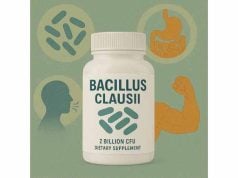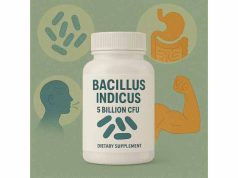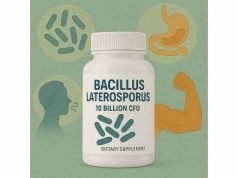Did you know bearberry has been a trusted herbal remedy for urinary health for centuries? This resilient evergreen shrub, also called Arctostaphylos uva-ursi, is renowned in both folk medicine and modern wellness for supporting bladder comfort, urinary tract health, and natural cleansing. Bearberry’s leaves are rich in powerful compounds like arbutin, flavonoids, and tannins, giving this botanical its unique benefits. In this detailed guide, you’ll learn exactly what bearberry is, how it works, its most evidence-backed uses, recommended dosages, safety notes, and the best ways to harness its potential for your wellbeing.
Key Takeaways
- Bearberry is prized for promoting urinary tract health and soothing bladder discomfort.
- Contains natural arbutin, which transforms in the body to support antibacterial action in the urinary system.
- Best used for short-term support, not as a daily long-term supplement.
- Side effects are rare but can include digestive upset or, with overuse, liver irritation.
- Consult a healthcare provider before use, especially if pregnant, breastfeeding, or on prescription medication.
Table of Contents
- Bearberry Background, Botanical Profile, and Supplement Overview
- How Bearberry Works: Arbutin, Tannins, and Bioactive Mechanisms
- Bearberry Main Benefits and Research-Supported Uses
- Bearberry Safety, Side Effects, and Interaction Considerations
- How to Use Bearberry: Dosage, Forms, and Best Practices
- Bearberry FAQ: Top Questions Answered
Bearberry Background, Botanical Profile, and Supplement Overview
Bearberry, or Arctostaphylos uva-ursi, is a hardy evergreen shrub native to cool, temperate regions of North America, Europe, and Asia. Its low, trailing stems, glossy green leaves, and bright red berries make it a distinctive plant on forest floors, especially in pine and spruce woodlands.
What Is Bearberry?
- Botanical profile: Bearberry is a member of the heather family (Ericaceae), related to blueberries and cranberries. The name “uva-ursi” means “grape of the bear” in Latin, a nod to the plant’s popularity among wildlife.
- Edible parts: While the berries are edible, the leaves are the true medicinal stars—harvested, dried, and prepared for teas, tinctures, and supplements.
Traditional and Folk Uses
Bearberry leaves have been used for generations by Indigenous peoples and herbalists to:
- Relieve minor urinary discomfort and maintain urinary tract health
- Soothe bladder irritation and promote natural cleansing
- Act as a gentle astringent for digestive and urinary support
- Support “cooling” or “cleansing” during seasonal transitions
Modern Bearberry Supplements
Today, you’ll find bearberry in various forms:
- Dried leaves: For making herbal teas or infusions, still a favorite in European and Native American folk traditions.
- Capsules/tablets: Standardized extracts to deliver consistent arbutin content.
- Liquid tinctures: Popular for quick absorption and ease of dosing.
- Herbal blends: Combined with other urinary-support herbs like buchu or corn silk.
Key Compounds in Bearberry
- Arbutin: The main active constituent, which is converted in the body to hydroquinone—a natural compound with antibacterial properties, especially in alkaline urine.
- Tannins: Astringent compounds that help tighten and tone tissues, soothing mucous membranes in the bladder and urinary tract.
- Flavonoids: Plant antioxidants supporting overall health and reducing inflammation.
Who Uses Bearberry Supplements?
- Adults seeking natural support for urinary comfort or mild, recurrent urinary issues
- Those looking for a traditional option for bladder and urinary wellness
- Individuals preferring plant-based solutions over synthetic urinary health products
Bearberry vs. Cranberry for Urinary Health
While both support the urinary tract, bearberry works through arbutin’s antibacterial action, while cranberry prevents bacteria from adhering to the bladder wall. They’re often used together in natural protocols.
Summary Table: Bearberry Fast Facts
| Attribute | Details |
|---|---|
| Botanical name | Arctostaphylos uva-ursi |
| Active part | Leaves (not berries) |
| Key compounds | Arbutin, tannins, flavonoids |
| Main uses | Urinary tract, bladder, “cleansing” |
| Forms available | Tea, capsules, tinctures, blends |
Bearberry’s legacy as a go-to remedy for urinary and bladder support continues today, bridging the gap between tradition and modern supplement science.
How Bearberry Works: Arbutin, Tannins, and Bioactive Mechanisms
Bearberry’s effectiveness is rooted in its unique blend of phytochemicals—most notably arbutin, but also tannins, flavonoids, and phenolic acids. These compounds interact in complex ways to target the urinary system, soothe tissues, and support natural microbial balance.
Key Active Compounds
- Arbutin: A glycoside compound found in high concentrations in bearberry leaves. When consumed, arbutin is absorbed and excreted in the urine, where it is converted into hydroquinone, a compound with direct antibacterial activity in the bladder and urinary tract.
- Tannins: These polyphenols give bearberry its astringent, “tightening” effect, helping soothe inflamed mucous membranes and support tissue tone in the bladder and urethra.
- Flavonoids: Antioxidants that offer broad cellular protection and contribute to bearberry’s anti-inflammatory actions.
Mechanisms of Action
Arbutin’s Antibacterial Effect
- Conversion to hydroquinone: After ingestion, arbutin is processed in the liver and released in the urine as hydroquinone. This substance is particularly effective in an alkaline environment, where it helps control the growth of bacteria responsible for minor urinary tract infections.
- Temporary natural disinfectant: Hydroquinone’s action is short-lived, making bearberry suitable for acute, not chronic, urinary issues.
Tannins and Tissue Support
- Astringency: Tannins “tighten” and protect the bladder lining, helping reduce irritation, discomfort, and excessive urinary frequency.
- Barrier protection: This astringent property also helps to shield sensitive mucous membranes against bacterial invasion.
Antioxidant and Anti-Inflammatory Properties
- Cellular defense: Flavonoids and phenolic acids in bearberry leaves neutralize free radicals and reduce oxidative stress in urinary tissues, supporting recovery and resilience.
Research and Traditional Wisdom
Scientific studies support bearberry’s arbutin-driven antibacterial effects and astringent benefits. While more human trials are needed, centuries of use by herbalists and Indigenous communities validate its role in natural urinary care.
Is Bearberry a Diuretic?
Bearberry is not a classic diuretic (it does not directly increase urine production), but its soothing and astringent effects can support urinary comfort and promote a natural “cleansing” sensation.
Does Bearberry Work for All Urinary Issues?
Bearberry is best suited for mild, acute urinary discomfort and should not be used for serious kidney infections, fever, or chronic problems. Always consult a healthcare provider for persistent or severe symptoms.
Summary Table: Bearberry Action and Health Targets
| Mechanism | Target/Benefit |
|---|---|
| Arbutin to hydroquinone | Antibacterial, bladder |
| Tannins (astringent) | Soothe, protect lining |
| Flavonoids (antioxidant) | Reduce inflammation |
In essence, bearberry’s effectiveness comes from its ability to provide short-term urinary comfort and support microbial balance—making it a unique herbal ally for urinary tract health.
Bearberry Main Benefits and Research-Supported Uses
Bearberry is one of the most trusted herbs for natural urinary wellness, particularly for soothing bladder discomfort and supporting the body’s own defense against minor urinary tract issues. Below are the top ways people use bearberry, plus practical insights for safe, effective results.
1. Relief for Minor Urinary Tract Discomfort
- Short-term support: Bearberry is commonly used at the first sign of urinary irritation, urgency, or burning, especially in adults with a history of mild, recurring discomfort.
- Traditional use: Many herbalists recommend bearberry leaf tea or capsules for its gentle but noticeable soothing effect.
2. Bladder and Urinary Tract Health
- Antibacterial action: Arbutin’s conversion to hydroquinone helps prevent bacterial growth in the bladder, supporting the body’s natural resistance to infection.
- Best for acute situations: Bearberry works well as a short-course supplement to promote comfort and healthy urinary function.
3. Astringent and “Toning” Properties
- Reduces excess urination: The tannins in bearberry can help manage excessive urinary frequency linked to irritation or mild inflammation.
- Soothes tissue: By protecting and toning the bladder’s delicate lining, bearberry may reduce urgency and discomfort.
4. Herbal Cleansing and Seasonal Support
- Traditional cleansing: Bearberry is often used in “spring cleanses” or as part of seasonal wellness routines for gentle detox and bladder reset.
- Combined with other herbs: Often paired with corn silk, parsley, or dandelion for a synergistic effect.
Who May Benefit Most?
- Adults experiencing mild, acute urinary discomfort (not for chronic or severe conditions)
- Individuals looking for traditional, plant-based bladder support
- Those who prefer herbal options for short-term urinary wellness
- People interested in natural approaches to seasonal cleansing
Limitations and Realistic Expectations
- Not a substitute for antibiotics: Serious, persistent, or febrile urinary tract infections require medical attention.
- Best used for short durations: Prolonged or excessive use can lead to side effects; stick to the recommended course.
- Results vary: While many notice benefits within a few days, outcomes depend on diet, hydration, and individual response.
Bearberry vs. Other Urinary Support Herbs
- Cranberry: Prevents bacterial adhesion, but doesn’t have arbutin’s direct antibacterial effect.
- Buchu and corn silk: Offer soothing and mild diuretic effects but lack bearberry’s strong astringency.
Summary Table: Bearberry’s Main Benefits
| Benefit | Who It’s Best For |
|---|---|
| Urinary discomfort relief | Acute, mild cases |
| Bladder support | Recurring minor issues |
| Tissue soothing/toning | Irritated bladder lining |
| Herbal cleansing | Seasonal or periodic users |
Bearberry’s enduring popularity comes from its reliable, evidence-backed support for short-term urinary and bladder comfort—making it a mainstay of traditional and modern wellness toolkits.
Bearberry Safety, Side Effects, and Interaction Considerations
Bearberry is respected for its traditional use and effectiveness, but like all potent botanicals, it comes with important safety guidelines. Understanding who can safely use bearberry, what side effects may occur, and how it interacts with medications ensures you gain benefits without unnecessary risks.
General Safety Profile
For most healthy adults, short-term use of bearberry—usually for no more than 5 to 7 days per episode—is considered safe. The main active compound, arbutin, is only intended for intermittent use because, at high doses or with prolonged intake, it can put stress on the liver and kidneys.
Common Side Effects
Bearberry’s side effects are rare when used responsibly but can include:
- Mild digestive upset: Nausea, vomiting, or stomach cramps, particularly if taken in high doses or on an empty stomach.
- Urine discoloration: Due to its natural pigments, bearberry can give urine a dark green or brownish hue, which is harmless and temporary.
- Mild skin rash: Occasionally occurs in sensitive individuals or with overuse.
- Headache or dizziness: Rare, and typically linked to exceeding recommended dosages.
Rare or Serious Side Effects
- Liver irritation: With chronic or excessive use, hydroquinone (a metabolite of arbutin) can accumulate and stress the liver, leading to elevated liver enzymes or, rarely, liver damage.
- Kidney strain: Long-term or high-dose bearberry use is not advised for those with kidney disease or impaired function.
- Allergic reaction: Very rare but possible. Symptoms include rash, itching, swelling, or breathing difficulties. Discontinue use and seek medical help if these occur.
Who Should Avoid Bearberry?
- Pregnant or breastfeeding women: Bearberry is not recommended due to insufficient safety data and possible uterine-stimulating effects.
- Children under 12: Their bodies process arbutin differently, raising the risk for side effects.
- People with liver or kidney disease: Bearberry may further stress these organs.
- Those with chronic urinary tract infections or serious kidney/bladder conditions: Medical care is needed; bearberry is not a substitute.
Medication Interactions
Bearberry can interact with certain medications and supplements:
- Diuretics: Bearberry may enhance their effect, increasing dehydration or electrolyte loss.
- Alkalinizing agents (antacids, baking soda): These can boost the conversion of arbutin to hydroquinone, potentially raising toxicity risk.
- Drugs processed by the liver: Since arbutin is metabolized in the liver, concurrent use with liver-metabolized medications may alter effects or increase side effect risk.
- Herbal blends: Combining with other urinary tract herbs may increase astringency or lead to overuse.
How to Minimize Risk
- Follow dosing guidelines strictly: Never exceed recommended amounts or use for longer than advised.
- Stay hydrated: Proper water intake supports kidney and bladder function.
- Monitor for unusual symptoms: Discontinue at the first sign of rash, persistent nausea, or changes in urine color or volume.
- Take breaks between courses: Only use bearberry for acute episodes and allow ample recovery time between uses.
Myths About Bearberry Safety
- Myth: “Bearberry is safe for long-term daily use.”
Fact: It is only recommended for short, targeted courses due to the risk of liver and kidney irritation with prolonged use. - Myth: “Natural herbs can’t cause allergies or toxicity.”
Fact: Any herbal supplement can cause side effects in sensitive individuals or if misused.
Signs You Should Stop Bearberry Use
- Persistent digestive discomfort or vomiting
- Jaundice (yellowing of the skin or eyes)
- Unusual fatigue, dark urine, or severe skin reaction
If any of these symptoms develop, seek medical advice promptly.
Bottom Line
Bearberry is effective and generally safe when used for short-term urinary support in healthy adults. As with all potent botanicals, respect dosing guidelines, avoid prolonged use, and always consult a healthcare professional if you are pregnant, on medication, or have underlying health conditions.
How to Use Bearberry: Dosage, Forms, and Best Practices
Knowing how to take bearberry correctly can help you achieve maximum benefit with minimum risk. Here’s a practical guide to forms, dosing, and safe use for optimal urinary tract support.
Recommended Dosage and Duration
- Typical adult dosage: 400–800 mg bearberry leaf extract (standardized to arbutin) up to 3 times daily.
- Tea: 1–2 teaspoons (2–4 grams) of dried leaves steeped in hot water, 2–4 times a day, for up to 5 days.
- Tincture: 1–4 ml, 2–3 times daily, following label or practitioner guidance.
Important: Do not use bearberry for more than 7 consecutive days or for more than 5 courses per year without medical supervision.
How to Take Bearberry
- With food: Taking bearberry with a meal may reduce digestive discomfort.
- As a tea: Pour hot water over dried leaves, steep 10–15 minutes, strain, and drink. Sweeten if desired with honey or stevia.
- Capsule or tablet: Swallow whole with a glass of water; follow manufacturer’s dosing instructions.
Choosing the Right Form
- Capsules/tablets: Provide standardized dosage and are convenient for travel or daily use.
- Loose leaf or tea bags: Ideal for those who prefer herbal infusions and enjoy the ritual of tea-making.
- Tinctures/liquids: Allow flexible dosing and are rapidly absorbed.
Best Practices for Results
- Start at the low end: Especially if you’re new to bearberry or have a sensitive stomach.
- Hydrate well: Water intake supports urinary flow and the herb’s natural cleansing action.
- Use only as needed: Bearberry is for acute episodes—not for ongoing “prevention.”
How to Combine Bearberry with Other Herbs
- For urinary comfort: Often paired with soothing herbs like marshmallow root or corn silk to balance bearberry’s astringency.
- With cranberry: For dual-action support—cranberry prevents bacterial adhesion, while bearberry targets bacterial growth.
Missed a Dose?
If you forget a dose, simply resume your regular schedule. Do not double up.
Table: Dosage and Administration At a Glance
| Form | Typical Dose | Max Duration | Notes |
|---|---|---|---|
| Capsule | 400–800 mg, 2–3x/day | 5–7 days | Use standardized products |
| Tea | 2–4 g dried leaf, 2–4x/day | 5–7 days | Steep 10–15 min, strain well |
| Tincture | 1–4 ml, 2–3x/day | 5–7 days | Mix with water, follow directions |
Always check with a healthcare provider if symptoms persist beyond a week or if you experience more than two UTIs in six months.
Signs of Proper Use
- Noticeable reduction in urinary discomfort
- No ongoing digestive upset, rash, or fatigue
- Symptoms improve within 3–5 days
Bearberry, when used with care, can be a valuable tool for short-term urinary wellness, helping you feel comfortable and confident during occasional urinary discomfort.
Bearberry FAQ: Top Questions Answered
What is bearberry used for in herbal medicine?
Bearberry is primarily used for supporting urinary tract health and relieving mild bladder discomfort. Its active compound arbutin is valued for natural, short-term relief from symptoms like burning, urgency, and irritation.
Is bearberry safe for daily long-term use?
No. Bearberry is only recommended for short, acute courses (no longer than 5–7 days at a time). Prolonged or repeated use can stress the liver and kidneys.
Can bearberry be taken during pregnancy or breastfeeding?
Bearberry is not advised during pregnancy or breastfeeding due to potential uterine stimulation and lack of safety research for infants.
Does bearberry interact with medications?
Bearberry can interact with diuretics, antacids, and drugs metabolized by the liver. Always consult your healthcare provider before using it with prescription medications or ongoing health conditions.
How fast does bearberry work for urinary discomfort?
Many people experience relief within 2–3 days, but bearberry should not be used if symptoms include fever, back pain, or last more than a week.
What’s the difference between bearberry and cranberry for urinary tract support?
Bearberry provides antibacterial action through arbutin, while cranberry prevents bacteria from sticking to the urinary tract lining. They’re often used together for complementary benefits.
Are there any side effects from bearberry?
Side effects are rare but may include mild digestive upset, darkened urine, headache, or rash. Serious effects are usually linked to overuse or underlying health issues.
Disclaimer
This article is for informational and educational purposes only. It is not intended as medical advice or a substitute for diagnosis or treatment by a healthcare professional. Always consult your doctor before starting any new supplement, especially if you have health conditions or are taking medications.
If you found this article helpful, please consider sharing it on Facebook, X (formerly Twitter), or your favorite platform. Follow us for more science-based wellness guides and help support quality health education for all!

















